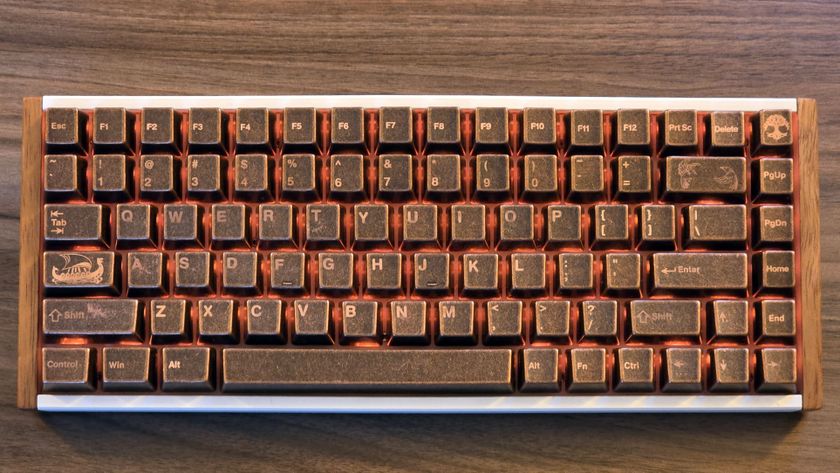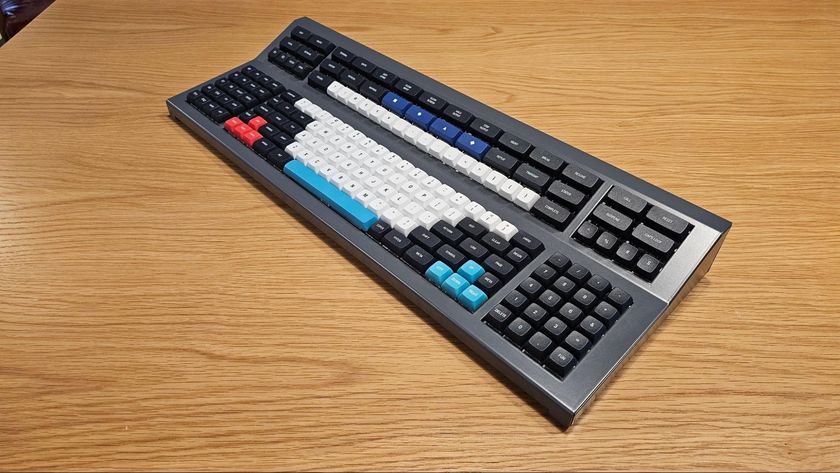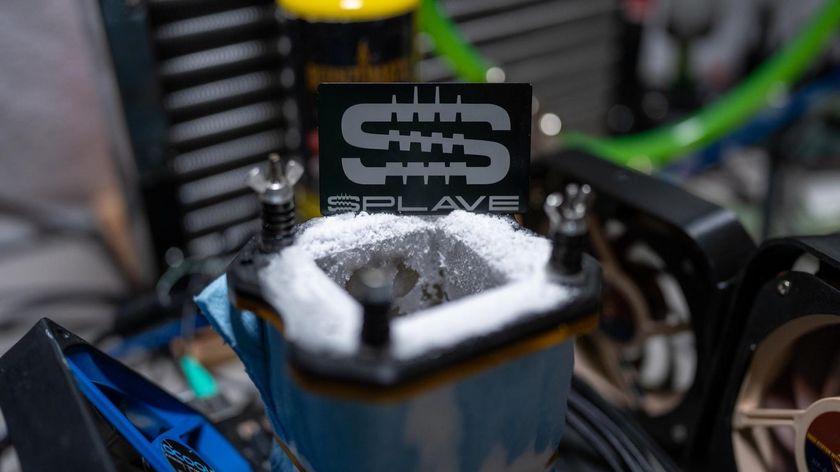Comparing External RAID Housings
The Perfect Backup Plan Isn't Possible
Manufacturers of back-up systems will probably throw their hands up in horror at the thought of storing data back-ups on hard drives. This is not just because they fear a loss of revenue; they have a number of justifiable qualms. After all, a hard drive is a hybrid product made up of electronic and mechanical components. The mechanical components are extremely complex and sensitive to magnetic and physical influences—anyone who wants to destroy a hard drive only needs to drop it, or bring it near a strong magnet.
To make a long story short, data stored on hard drives is by no means safe. The option of using hard drives as backup media is a possibility for us purely on the basis of cost and performance. Backing data up to an additional hard drive is not a replacement for a proper backup strategy. Hard drive backups are best used as a first stage, short-term backup option.
Backup strategies
Generally speaking, data backups should be made on media that can be physically removed from the host system. It’s no surprise that the most popular products are tape systems like streamers, disk solutions like DVD or Blu-ray, and similar systems that use replaceable data carriers. The more flexible the read method a data carrier has—DVDs are ideal—the simpler it is to restore the data should the worst case scenario ever occur.
People who want to be extra safe make backups of their important data in cycles. A daily backup made seven days of the week, or at least after every working day, is one option, and weekly backups is another. The best solution is to combine the two, making seven backups for each day of the week, and also saving backups for the past four weeks. Older backups can be archived at greater intervals.
The execution and granularity of the backups will depend on the importance of the data. For home computers, a complete data backup once a week, combined with archiving the most important data approximately once a month, is often sufficient. It is important to ensure separation of the backup media from the system, from the power supply, and ideally the location to ensure that lightening strikes, storms, fires or floods won’t affect your data.
You should also attempt a restoration every once in a while. The greatest backup system in the world is useless if you are unable to reliably restore your data.
Stay On the Cutting Edge: Get the Tom's Hardware Newsletter
Get Tom's Hardware's best news and in-depth reviews, straight to your inbox.
Current page: The Perfect Backup Plan Isn't Possible
Prev Page Backing Up Data To A Hard Drive Next Page NAS, DAS, Or What?-
Aragorn Did anyone else think that the thumbnails of the charts were utterly useless. Why don't we get nicely sized images in THG reports anymore?Reply -
Discussion about external desktop storage and no mention whatsoever of Firewire? *yawn* call me when you have a serious storage article. Firewire is the defacto standard in the pro desktop market, and also of course with all Apple systems. It's faster than USB 2.0 in every benchmark. It's more flexible and mature than eSata. And with Firewire 3.2 Gb/s coming later this year, it's about to get reeeeally fast. I have five external disks (including 2 raid arrays) and all are Firewire 800 connected.Reply
-
hawler I wish firewire would just die with the upcoming release of USB 3.0 which will be fast 4GB/s and more common. It really is annoying to have both of these on a computer when you could simply have just one of them. Id rather have 10 USB slots then 8 USB and two firewire on my computer. I knwo this isn't goign to happen but there simply is no need to have both, I realize currently it is faster but it won't be soon, and when it was first made they should have tried to make it a new version of USB so that there wouldn't be 2 standards.Reply
Thats just my opinion on it, im sure people who use a lot of firewire products (i only use it for my ext HDDs but) might disagree but the idea of having just one I/O choice to me is better...its like display port for monitors...why oh why didn't they just leave it with DVI/HDMI -
@ hawler: USB is NOT a replacement for firewire! There's a reason that ALL pro audio equipment uses Firewire instead of USB. There's a reason that ALL camcorders can stream video only over Firewire and not USB.Reply
It's called "Isochronous transfers". Critical when you're dealing with real-time audio or video. USB doesn't provide that. Also makes bulk data transfer (like backups, for instance) perform more consistently.
USB was never designed for bulk data transfer. That's why it sucks so badly at it. Ever wondered why a 480 Mbit USB2 connection (That's 60 MB/s) can barely achieve between 35 MB/s in real world transfers? That's because the protocol sucks at bulk data transfer. USB was designed for keyboards and mice. To replace low-speed serial ports. Not for high speed bulk data transfer. The USB protocol is inherently deficient in this regard.
Firewire, on the other hand, was designed *specifically* for bulk data transfers. It's obvious when you look at its efficiency at these kinds of tasks. Firewire 400 (that's 50 MB/s) achieves around 42 to 45 MB/s in real world performance. Far FAR more efficient than USB at moving data.
My vote would be for ALL external data storage, audio, and video devices to be firewire only. Make everything else USB. -
njalterio For those of you asking about firewire, many companies do not like to use firewire because of security issues. Firewire devices communicate through direct memory access. There is no operating system intervention. This is why many companies will have their IT staff remove firewire expansion cards or disable them.Reply -
@ njalterio: Companies? IT departments? What kind of company IT department directs their employees to backup the PC's individually using external disks??Reply
Firewire does indeed use DMA. That's another advantage it has over USB, at least in terms of performance. Everyone knows from back in the PATA disk days, that DMA transfers are way faster than non-DMA transfers.
But for professional audio/video, there is only one option and that's Firewire. No such thing as pro a/v products that use USB. They just don't exist. So when you say that "companies disable fw interfaces" I suppose it depends on what sort of company you're talking about. Not a production studio that's for sure!! -
xxsk8er101xx There is this program called Hotswap 4.0.1 i think it is. or maybe 4.1.1. I forget. But it's called Hotswap and it allows you to have that add/remove icon for harddrives. It works for cd-roms, ide drives, fixed drives ... it's an amazing program and best of all - it's free!Reply
Again it's hotswap! 4.'something ... http://www.softpedia.com/get/System/OS-Enhancements/HotSwap.shtml it's an amazing tool and it works very well. Solves the problem listed on page 1 about no add/remove icon. -
GreenPower All my applications are installed on the C drive, which is a 500GB $79 WD unit. I buy a second identical drive and hook it up to an extra 18" sata cable and power right at the edge of the pc case chassis.Reply
I use Acronis True Image disk utility to make and exact copy when the system half way reboots. Then I turn off the power and swap disks. A few applications like Photoshop can still detect they have been copied. But besides this its a 5 minute replacement if my HD ever gets corrupted.
Otherwise it takes about 4 LONG days to rebuild the system from scratch.
Five minutes vs four days. Go figure! -
GreenPower Always run the long format and surface scan any new disk to check for bad sectors. Then re-scan it after its been copied and re-booted with. Only then can you state that you backup is worthy.Reply













